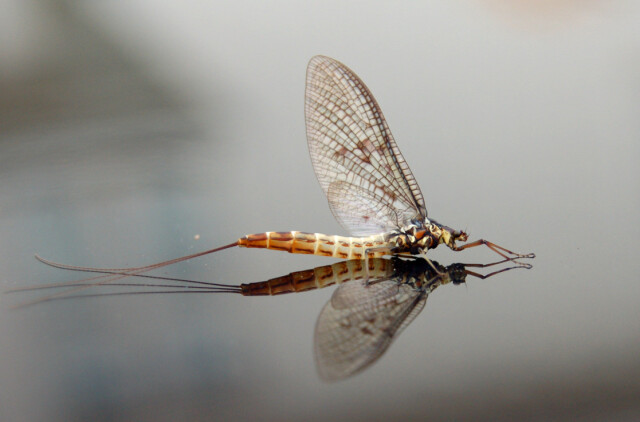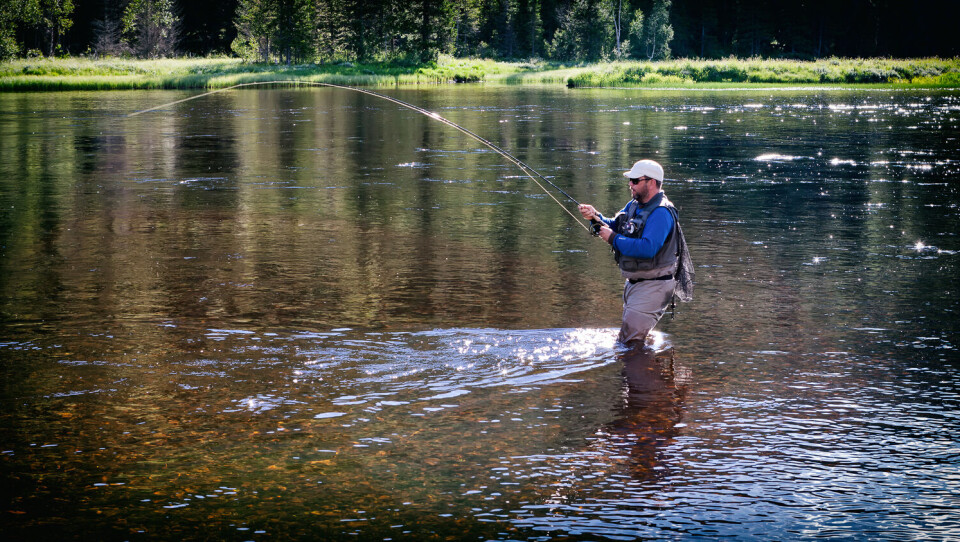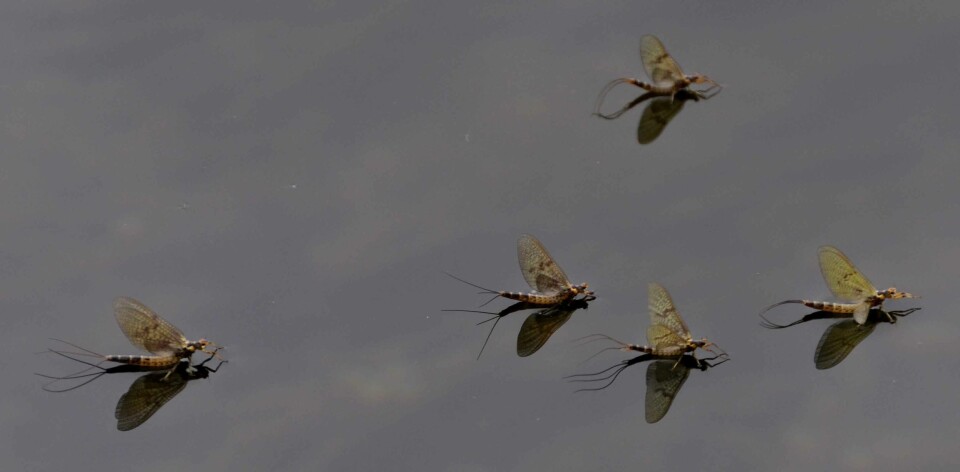Trysilelva: summertimes’ best danica hatches

Do you dream about intense hatches of big mayflies? Then Tryiselva is certainly your best bet.
When the big mayfly Ephemera Danicas begin to hatch something magical happens. Even the largest fish in the river key in on these big bugs on the surface, and you can catch big fish on the dry – as long as your imitation is good enough.
Below you’ll find proper tying instructions for just the fly you’ll need to trick these fish. These flies are designed by the late well known Norwegian angler, fly tyer, philosopher and life enjoyer Staffan Lindstrøm. Those who knew Staffan also know that these flies are at least as good as anything else out there.
Trysilelva is THE danica river
Trysil and Trysilelva is renowned for its epic hatches of Norway’s next largest mayfly: Ephemera Danica. The hatches begin in the southernmost sections of Trysilelva and work they ways upstream, and you can follow the hatches upstream to stretch out your time targeting aggressively rising big fish.
These hatches typically take place around the two weeks of midsummer. The spinner fall during the evenings can last for a week or two longer. The weather, the water conditions, and the temperature of course play a role, but Trysil is not only known for its epic hatches. It is also known for being predictable.

Trysilelva begins as it runs out of lake Sennsjøen, but the watershed also consists of large lakes such as Femunden and Galtsjøen in Norway. It stretches northwards towards Trøndelag, and has several sources from the Swedish side of the border.
This incredibly varied river begins at the border to Engerdal to the north, where it runs quickly through the valley south of Innbygda, where it begins to slow down towards Nybergsund. It ends its journey at the border to Sweden where it’s name then changes to Klärelven.
Help, I’m breathing in danica!
When the hatches of these big mayflies are at their most intense, their are an enormous amount of bugs on the water. As incredible as this is, it can be demanding fishing. You’ll need to place the right fly in the right spot in just the right way. At times the hatches can be so intense that you’ll simply need a good bit of luck to have the fish choose your fly over the real deal which cover the water surface.
Remember that you shouldn’t fish with the thinnest leaders. Proper danica imitations are large, and can often get twisted if your tippet is too thin.

During the beginning of these hatches, emerger patterns are typically the most effective (most of the time). Trout and grayling will often prefer insects trying to shed their exoskeleton. During this face they aren’t able to fly away, and are easy picking for both birds and fish.
After a while the fish key in on the next cycle – called subimago in scientific terms, more commonly known as duns to anglers. If the humidity rises, or the the rains come these newly hatched mayflies must stay on the surface for longer before they can fly, and fish often prefer this to anything else.
When the hatches near their end the spinner fall is more important. Then it is all about being in the right place during the calm warm nights. Wind and rain can completely ruin the spinner fall, but if you experience a warm calm evening things can get pretty crazy.
Just don’t forget that the spinner fall can last for a while throughout the evening, and if when the spinners get washed into back eddies and pocket water you will find “clean up fish” cruising around in the shallow water as it gets dark. Then there will often be large fish in the shallow waters that typically only hold small fish.
You can also find good danica hatches throughout several of the good fly fishing zones in Engerdal.
- Learn to tie the simple yet effective Trysil Danica – watch this video
- Curious as to what a danica hatch can look like? read this article
- This is how you tie an effective danica emerger for slower flowing water – see this tying video
- Tie this classic “The Mohican Mayfly” – see this step by step guide


